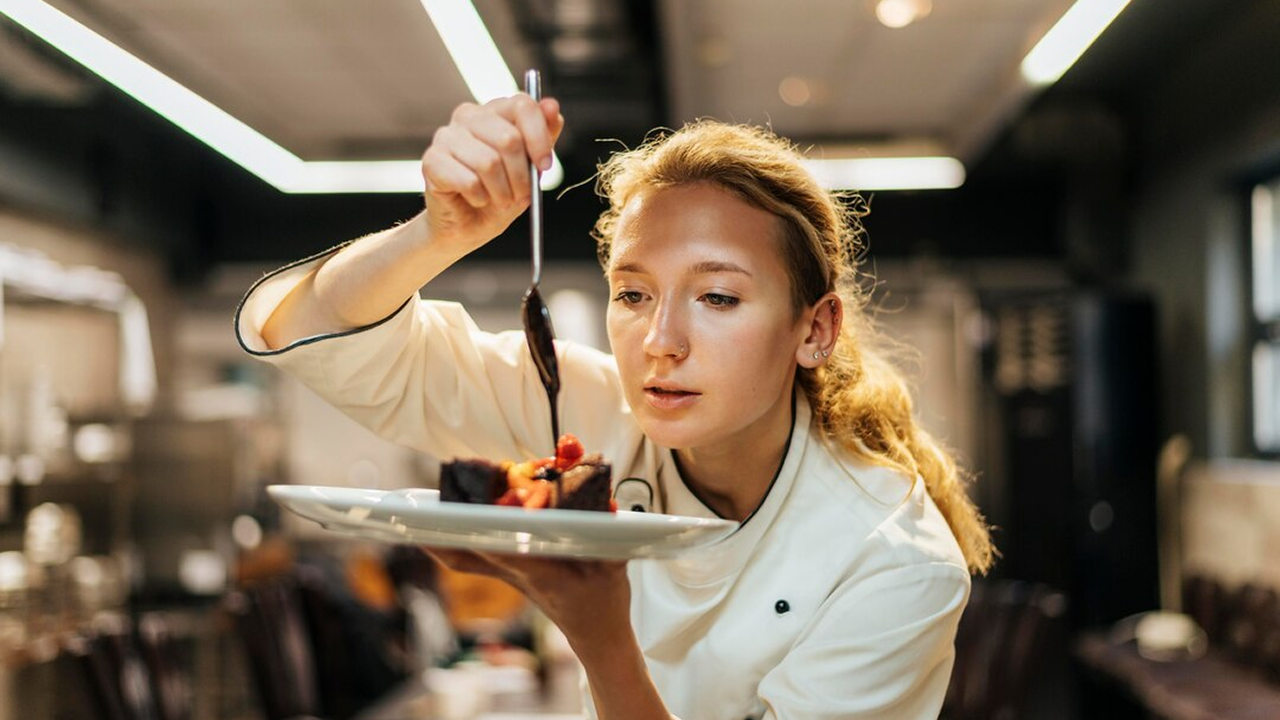
Top Restaurant Trends in 2025: What’s Shaping the Future of Dining
Top Restaurant Trends in 2025: What’s Shaping the Future of Dining
As the hospitality industry continues to evolve, restaurants are adapting to shifting consumer behaviors, technology advancements, sustainability goals, and new culinary inspirations. The year 2025 is poised to bring innovation not only in what we eat—but also how we eat, where we eat, and why we choose certain establishments over others.
1. Tech-Enhanced Dining Experiences
Technology will continue to revolutionize every aspect of restaurant operations and guest experiences.
a. AI-Powered Personalization
Artificial intelligence is driving menu suggestions, customized offers, and guest experiences tailored to preferences. AI bots track ordering behavior and recommend dishes in real-time.
b. Voice and Chat Ordering
Voice assistants and chatbots allow users to place takeout orders via Alexa, Google Assistant, or WhatsApp. Chat integrations improve customer service and reduce phone volume.
c. Smart POS and Mobile Payments
Contactless payments, QR menus, and table-side payment via tablets are now standard. Integrated POS systems deliver analytics and improve efficiency.
d. Kitchen Automation
Robotic kitchen equipment—from fryers to salad prep lines—improves speed and consistency. Labor shortages make automation a necessity.
2. Sustainable and Ethical Dining
Eco-conscious consumers are supporting restaurants with strong sustainability values.
a. Carbon Labeling
Menus may soon include carbon footprint scores for dishes. This transparency helps guests make ethical choices.
b. Waste Reduction Tech
Smart composters, food waste tracking software, and AI-driven inventory management tools help restaurants reduce food loss and improve margins.
c. Local and Regenerative Sourcing
Farm-to-fork models are evolving into regenerative agriculture partnerships. Consumers want to know how their meal impacts the planet.
d. Eco-Packaging and Reusables
Single-use plastics are out. Compostable packaging, reusable takeout containers, and edible cutlery are trending.
3. Health and Wellness-Centric Menus
Wellness remains top-of-mind for many diners.
a. Plant-Forward Cuisine
Plant-based continues to grow, but 2025 will see a surge in “plant-forward” dishes—using more vegetables, legumes, and grains without fully replacing meat.
b. Adaptogens and Functional Foods
Mushroom coffee, turmeric shots, and dishes infused with functional herbs (like ashwagandha or ginseng) are gaining traction.
c. Personalized Nutrition
Some restaurants offer personalized meal plans based on DNA testing, allergies, or dietary goals.
d. Alcohol Alternatives
The sober-curious movement is creating demand for non-alcoholic beers, zero-proof cocktails, and wellness mocktails.
4. Immersive and Experiential Dining
Today’s diners are looking for experiences—not just meals.
a. Multi-Sensory Dining
Restaurants are using lighting, sound, aroma, and even augmented reality to engage all senses. These experiences are share-worthy and memorable.
b. Chef’s Table and Open Kitchens
Transparency and storytelling are key. Guests enjoy interacting with chefs and watching their food being prepared.
c. Themed Pop-Ups
Pop-up events, limited-time themes, and seasonal menus create a sense of urgency and excitement.
d. Culinary Entertainment
Live music, cooking demos, or in-house mixology shows add value beyond food.
5. Hyperlocal and Community-Focused Models
Restaurants are building deeper roots in their neighborhoods.
a. Neighborhood Market Hybrids
Many eateries now double as local grocers or bakeries. Guests can shop for specialty goods during or after their meal.
b. Cultural Storytelling
Menus are embracing immigrant heritage, indigenous ingredients, and cross-cultural storytelling that reflect community identity.
c. Charity Tie-Ins
Consumers are supporting restaurants that give back—through meal donations, pay-it-forward programs, and local partnerships.
d. Co-Working and Café Crossover
Hybrid spaces cater to remote workers, offering day passes, reliable Wi-Fi, and coffeehouse vibes.
6. Elevated Takeout and Off-Premise Models
Delivery and takeout are no longer secondary—they’re vital channels.
a. Ghost Kitchens 2.0
Advanced ghost kitchens now offer multiple brands from a single facility and use AI to match menus with local preferences.
b. Premium Packaging
Takeout food is getting a makeover with better heat retention, elegant presentation, and tamper-proof packaging.
c. Branded Meal Kits
Restaurants offer DIY meal kits, baking kits, and cocktail kits—ideal for date nights and families.
d. Virtual Restaurant Concepts
Brands with no physical footprint are launching via social media and delivery apps.
7. Workforce Evolution and Labor Trends
Labor challenges remain a core issue for restaurant operations.
a. Flexible Staffing Models
Shorter shifts, job sharing, and gig-style work are helping restaurants manage costs and attract diverse workers.
b. Automation and Efficiency Tools
Scheduling tools, payroll automation, and cross-training platforms help reduce friction in management.
c. Mental Health and Wellness
Employee well-being is taking priority, with access to mental health resources, time-off initiatives, and flexible scheduling.
d. Leadership Development
Restaurants are investing in training programs, mentorships, and career pathing to reduce turnover.
8. Data-Driven Business Decisions
Smart restaurants are leaning on data like never before.
a. Predictive Analytics
Sales forecasts, customer trends, and inventory needs are predicted using AI.
b. Loyalty and CRM
Loyalty programs are becoming more sophisticated with personalized offers, customer journey mapping, and multi-platform tracking.
c. Guest Feedback Analytics
AI tools analyze guest reviews, social media mentions, and survey results to provide actionable insights.
d. Operations Dashboards
Real-time metrics help managers optimize labor, reduce waste, and improve service timing.
How Restaurants Can Prepare for 2025 Trends
- Audit Your Tech Stack: Ensure your POS, inventory, and CRM tools are modern and integrated.
- Start Small with Innovation: Pilot one trend at a time—test plant-forward dishes or offer a chef’s table night.
- Talk to Your Guests: Use surveys and loyalty programs to learn what matters most to your diners.
- Invest in Your Team: Culture, training, and wellness must be priorities to retain top talent.
- Partner Locally: From farm sourcing to charity tie-ins, local alignment builds community and trust.
Final Thoughts: Stay Relevant by Evolving
The restaurant industry is entering a new era shaped by digital tools, social awareness, and customer empowerment. Staying relevant requires flexibility, creativity, and a willingness to reimagine traditional models.
By embracing the trends of 2025, restaurants can future-proof their operations, deepen guest loyalty, and create dining experiences that go beyond the plate.
Now is the time to innovate—or risk getting left behind.